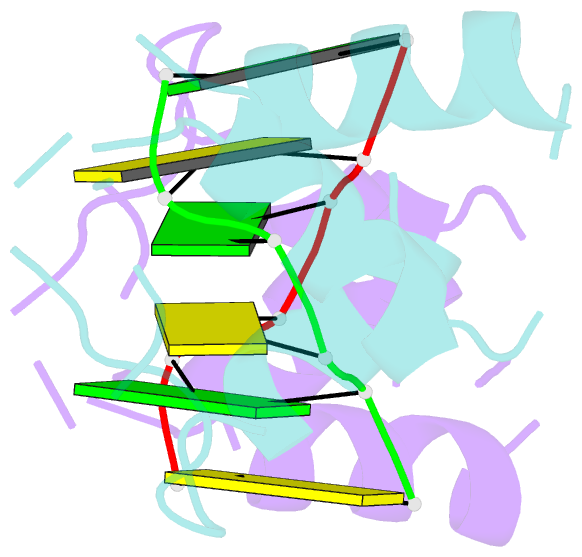Summary information and primary citation
- PDB-id
- 7c0j; SNAP-derived features in text and JSON formats;
DNAproDB
- Class
- DNA binding protein-DNA
- Method
- X-ray (2.75 Å)
- Summary
- Crystal structure of chimeric mutant of gh5 in complex with z-DNA
- Reference
- Park C, Zheng X, Park CY, Kim J, Lee SK, Won H, Choi J, Kim YG, Choi HJ (2020): "Dual conformational recognition by Z-DNA binding protein is important for the B-Z transition process." Nucleic Acids Res., 48, 12957-12971. doi: 10.1093/nar/gkaa1115.
- Abstract
- Left-handed Z-DNA is radically different from the most common right-handed B-DNA and can be stabilized by interactions with the Zα domain, which is found in a group of proteins, such as human ADAR1 and viral E3L proteins. It is well-known that most Zα domains bind to Z-DNA in a conformation-specific manner and induce rapid B-Z transition in physiological conditions. Although many structural and biochemical studies have identified the detailed interactions between the Zα domain and Z-DNA, little is known about the molecular basis of the B-Z transition process. In this study, we successfully converted the B-Z transition-defective Zα domain, vvZαE3L, into a B-Z converter by improving B-DNA binding ability, suggesting that B-DNA binding is involved in the B-Z transition. In addition, we engineered the canonical B-DNA binding protein GH5 into a Zα-like protein having both Z-DNA binding and B-Z transition activities by introducing Z-DNA interacting residues. Crystal structures of these mutants of vvZαE3L and GH5 complexed with Z-DNA confirmed the significance of conserved Z-DNA binding interactions. Altogether, our results provide molecular insight into how Zα domains obtain unusual conformational specificity and induce the B-Z transition.





